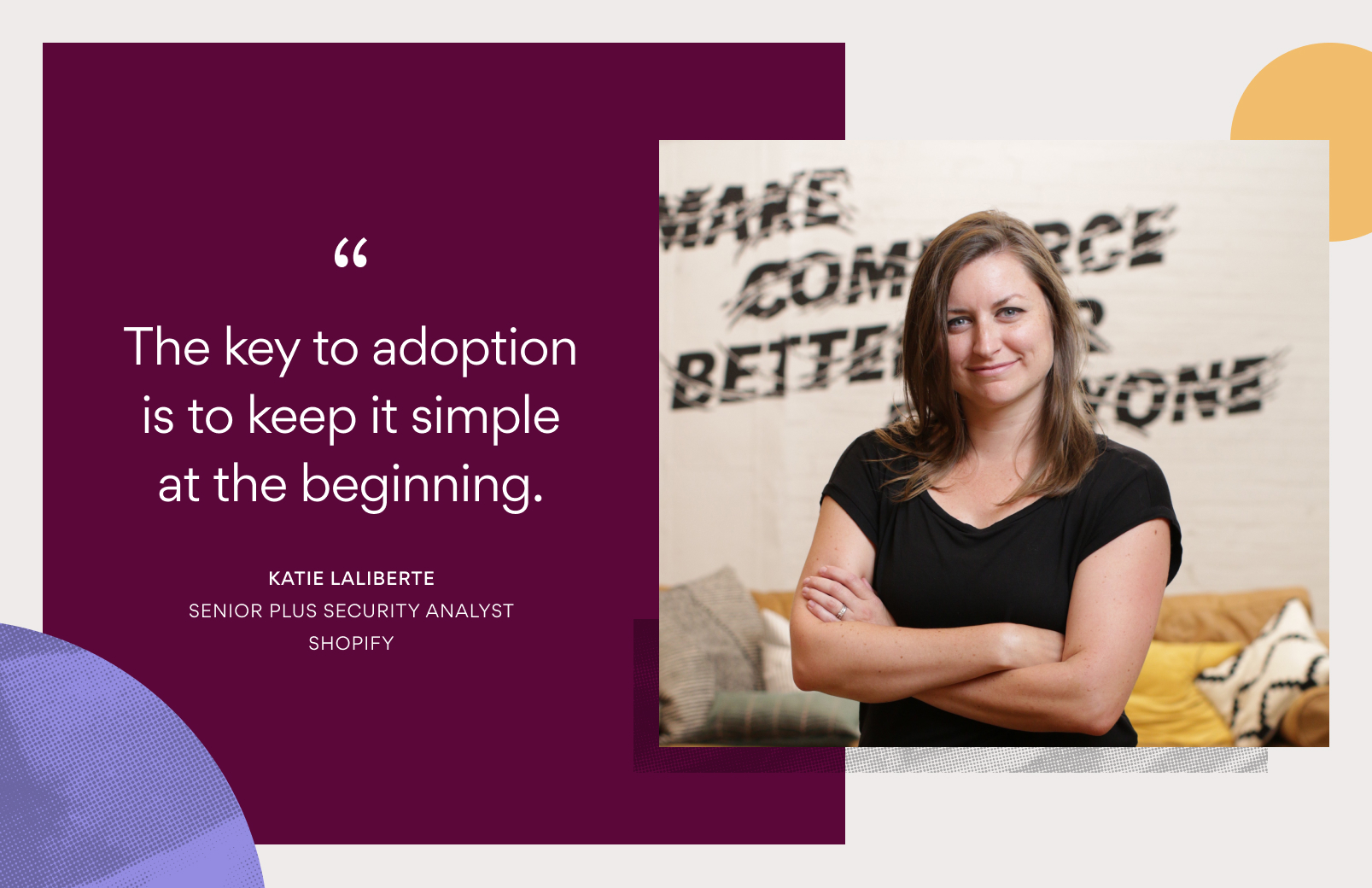How to implement Goals across your organization with the Asana Way of Change

Read this article in French, German, Portuguese, Spanish, or Japanese.
With Goals in Asana, teams now have a way to connect big-picture company goals to the daily work that supports those goals. But to help your team successfully implement Goals, you need a powerful and established change-management strategy to set your team up for success.
Simply put, you need the Asana Way of Change.
The Asana Way of Change implements change management best practices to help your team develop a roadmap to lasting change. There are six steps to set up for success:
- Define your why
- Discover your now
- Design your first workflow
- Enable your team and celebrate wins
- Get set up for success
- Measure & expand your use
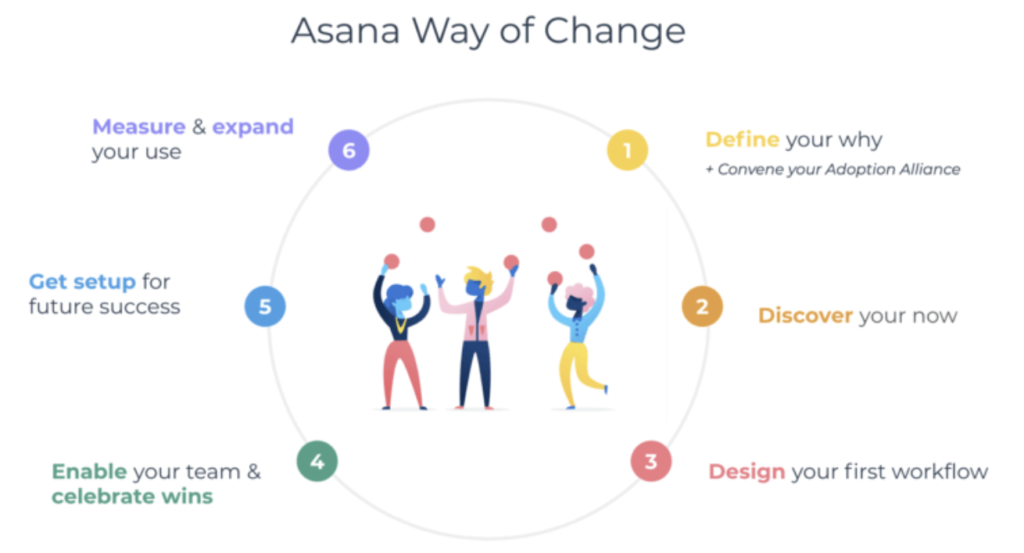
1. Define why your team needs Goals in Asana
Before you roll out Goals across your organization, it’s helpful to identify your pain points and clearly lay out why your team is implementing Goals in Asana. When your team has a clearly defined answer to why you’re adopting a new system, you can use that answer in a “Why Asana?” statement to guide your team. To craft your “Why Asana?” statement, use the following sentence builder:
“[Team/Organization name] is using Asana to [manage these projects and processes]. In doing so, we hope to [alleviate these pain points] and [accomplish these goals].”
For example, you might write:
“My organization is using Asana to manage goal setting and tracking so that we can connect everyday work to high-level goals and objectives. In doing so, we hope to get everyone on the same page on high priority issues, and make sure that resources are allocated to the right things at the right time.”
It’s also critical to set clear metrics for success at this point. How will you measure the success of this implementation? Here are a few examples:
- We will migrate all of our goals from spreadsheets by December 1, 2020
- 100% of department leads will share their next quarterly goals update in Asana
Establishing your Adoption Alliance
Your Adoption Alliance are the people in your organization that are going to help drive the adoption process, along with your “Why Asana?” statement. They are:
- The Convention Setter. As workplace influencers, Convention Setters help establish basic conventions for how your team will use Goals in Asana. They also help answer questions teammates have along the way.
- The Awareness Builder. Awareness Builders sit on the leadership team. They help communicate your “Why Asana” goal statement so the team feels bought in.
- The Success Celebrator. These team members are usually individual contributors and early adopters who help their peers keep up the momentum by celebrating wins throughout the Goals implementation process.
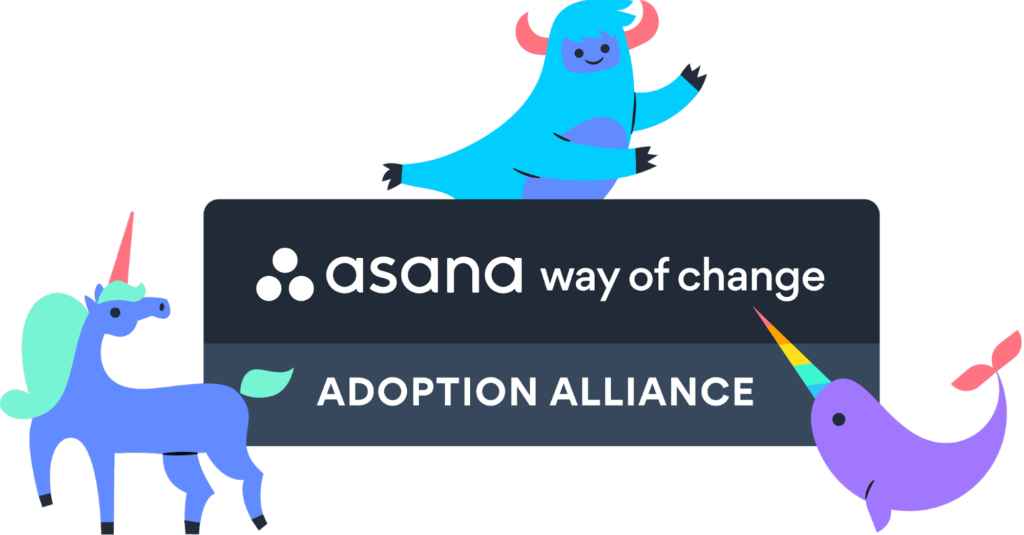
2. Discover how you currently track goals
Most teams already have a system for goal-setting in place. Your team might track goals in a spreadsheet or a slideshow, but infrequently update those documents. You might find that, though executive leaders at your organization think they communicate goals effectively, most employees don’t have a clear sense of how their work contributes to company goals. If so, you’re not alone. In a recent survey, only 16% of knowledge workers said their company was effective at setting and communicating company goals, and only 26% had a clear understanding of how their individual work contributed to company goals.
Before you can re-work your goal-setting system, it’s helpful to understand what system you already have in place. That way, you can identify what is working, and what pain points need to be addressed first. Consider:
- What is your current goal-setting process?
- How does your team currently report progress on goals, and with what frequency?
- What pain points are you trying to resolve by tracking Goals in Asana?
- What tools are you currently using to plan and track your goals (i.e. spreadsheets, slides)?
- What habits does the team need to develop in order to fully adopt Goals in Asana?
Once you know how your company currently manages goal-setting, you can adapt your implementation policy to address the team’s most pressing pain points while retaining current best practices.
3. Design your first workflow
Step three is where your Adoption Alliance begins to shine. At this stage in the Asana Way of Change, select one existing goal to begin with—and build it out in Asana! During this process, your Convention Setter should meet with the Adoption Alliance to pilot the flow of this first goal. Together, you’ll then start establishing guidelines to direct how the rest of the team will implement other Goals. Learn more about aligning teams and increasing impacts in our on-demand training.
These rules will be unique to your team, but they might answer questions like:
- Who can create Goals?
- Which Team should own the goal?
- How will goal owners update goal progress, and how frequently?
- How will sub-goals work?
- What are the goal-naming conventions?
Unlike other goal-setting tools, Goals in Asana connect your everyday work to your big-picture objectives. At Asana, we call this the pyramid of clarity. It’s critical that your first workflows help illustrate how individual work connects to company Goals. That’s why every goal has a section for supporting work—projects and Portfolios that contribute to the Goals’ success. You’ll also see relevant Goals in a project or Portfolio’s Progress tab, in a section titled Goals supported by this project. Encourage all goal owners to add related work, so you can easily view these connections.
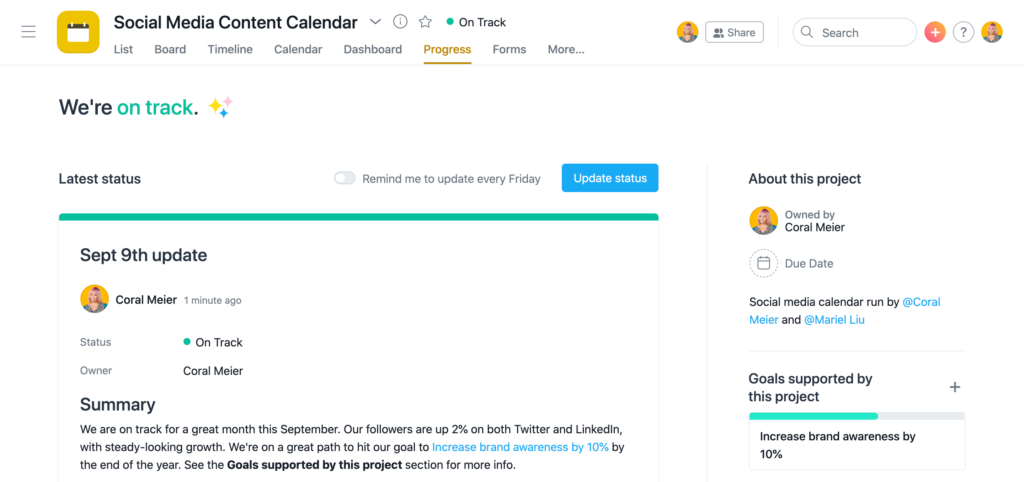
4. Enable your teams and celebrate wins
Once your Adoption Alliance has established conventions to guide goal setting and progress reporting, your Awareness Builder can get to work bringing other team members across the organization into the fold. When you first roll out Goals, plan to host a training for the team on how to use Goals in Asana and what the expectations are for how the team will use Goals moving forward. During the initial roll out, make sure to leave plenty of room for questions.
It can also be helpful to connect team members with goal-setting additional resources. Whether your team uses OKRs, KPIs, or another goal setting methodology, encourage team members to learn more how to set great goals. Your Success Celebrator can also step in at any point in this step to encourage team members, recognize success, share appreciation, and celebrate wins.

5. Get set up for future success
At this stage in the process, your team members should be using Goals in Asana all on their own. Congratulations! Rolling out a new tool is no small feat, and your Adoption Alliance has put a lot of work into making sure the process is clear and streamlined.
To continue supporting team members as they ramp up using Goals, keep the lines of communication open. Make sure your Awareness Builder continues messaging the importance of using Goals, and your Convention Setter holds regular office hours to answer any lingering questions. Set a timeline and encourage teams to move their quarterly or yearly goal-setting exercises into Asana. Share best practices in a central Asana project or your favorite messaging system.
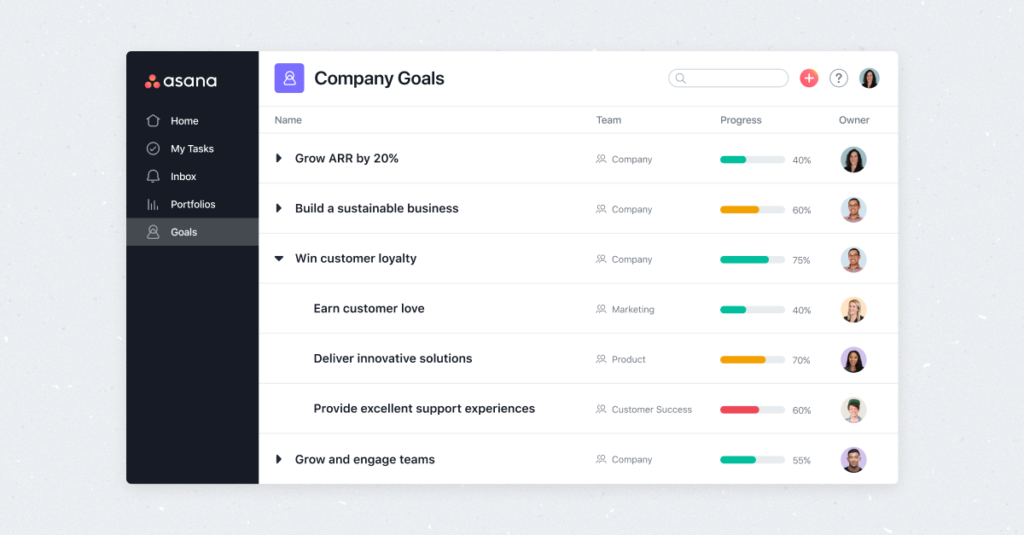
6. Measure & expand your use
At this step in the Asana Way of Change, look back on your initial goal statement:
“My organization is using Asana to manage goal setting and tracking so that we can connect everyday work to high-level goals and objectives. In doing so, we hope to get everyone on the same page on high priority issues, and make sure that resources are allocated to the right things at the right time.”
Reflect on how your team was managing goal setting, and how you do it now, with Goals in Asana. Evaluate how things are going. Check in with your Adoption Alliance: are there tweaks that need to be made? Do teams generally seem to understand how Goals work? Remember: change management is an ongoing process, so don’t be afraid to adapt and grow your policies as time goes on.
Implement Goals with the Asana Way of Change
The Asana Way of Change was developed by our Professional Services and Customer Success teams. We adapted change management best practices, analyzed what the most successful teams in Asana have in common, and matched those methods with our expertise serving thousands of Asana customers around the world. As you prepare to implement Goals in Asana across your organization, try the Asana Way of Change to create the best game plan for managing the transition.
To learn more about the Asana Way of Change and partner with our Professional Services team directly, contact your account representative today!

